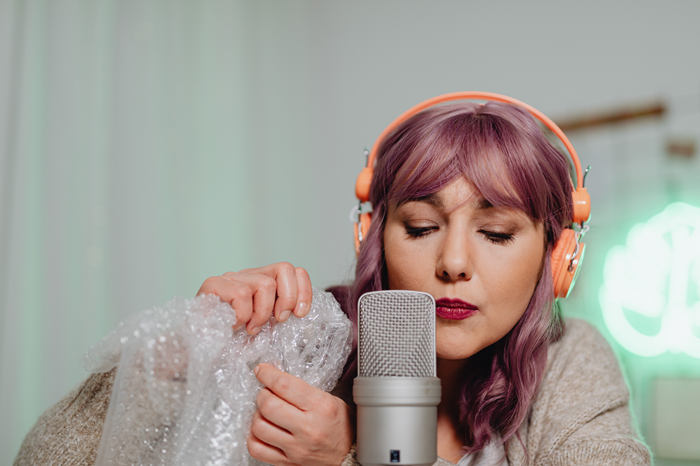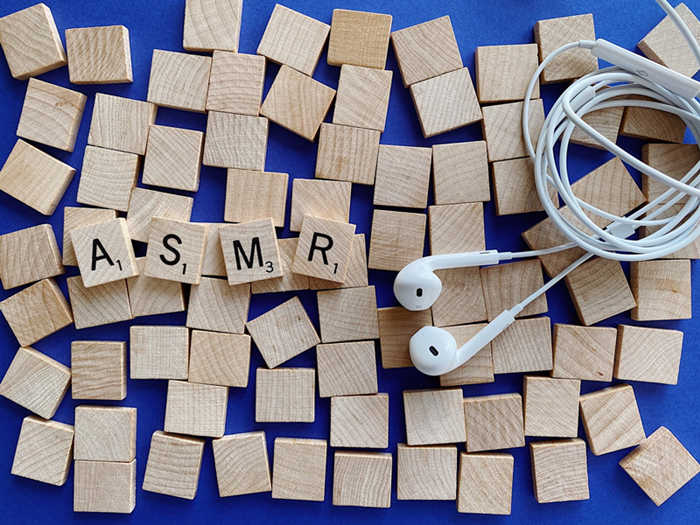Ultimate Guide to ASMR Meaning Slang
ALL TOPICS
- How to Filter a Website?
- Internet Filter Reviews
- Apps to Filter Websites
Aug 25, 2025 Filed to: Teen Slang Proven solutions
Have you ever heard your child talk about watching videos of someone whispering or tapping their nails on a table and felt a mix of confusion and concern? If so, you've likely encountered the world of ASMR. On platforms like TikTok and YouTube, ASMR content has become a massive phenomenon, racking up billions of views. But what exactly does ASMR mean? Is it just a weird internet trend, or is there more to it?
Understanding the ASMR meaning is crucial for modern parents navigating their children's digital interests. Let's be honest, hearing about "brain tingles" can sound strange. You're not alone in wondering if it's safe for your kids. This comprehensive guide will demystify ASMR meaning, explore how ASMR meaning slang is used in online conversations, and provide essential knowledge for ensuring your children's experience is both positive and safe.

Table of Content
Part 1: What Is ASMR: Definition & Science Behind Sensation

When exploring the ASMR meaning, it's essential to start with the basics. ASMR stands for Autonomous Sensory Meridian Response – a term that might sound clinical, but describes a surprisingly common and pleasant experience.
The ASMR meaning encompasses a deeply relaxing tingling sensation that typically begins on the scalp and can travel down the back of the neck and upper spine. Think of it as a gentle, pleasant form of "goosebumps" that brings feelings of calm and well-being rather than excitement or shock.
While the science behind ASMR continues to evolve, researchers have identified that specific audio and visual triggers can reliably produce this response in susceptible individuals. Common triggers include:
- Soft whispering or gentle speaking
- Tapping sounds on various surfaces
- Crinkling paper or plastic
- Personal attention scenarios (like role-play)
- Repetitive movements or sounds
It's important to understand that, just like music-induced frisson, not everyone experiences ASMR. The term itself was coined in 2010 by Jennifer Allen, who sought to create a more objective and clinical name for the phenomenon, moving it away from potentially misleading interpretations.
For parents trying to grasp the ASMR meaning, think of it as a natural relaxation response – similar to how some people find certain sounds or activities inherently soothing.
Part 2: How ASMR Content Works on Social Platforms

Understanding the ASMR meaning becomes clearer when you see how it translates into digital content. ASMR videos have become increasingly popular across social platforms, with millions of viewers turning to these videos for relaxation and comfort. The phenomenon has found its home on platforms like TikTok, YouTube, and Twitch, where creators craft specialized content designed to trigger these soothing sensations.
When exploring ASMR content, you'll notice creators typically share common production elements. They carefully curate their recording environment, ensuring a pristine, quiet space that allows for crystal-clear audio capture. Popular ASMR content includes:
- Tactile triggers: Brushing microphones, crinkling paper, or tapping on various surfaces
- Vocal triggers: Soft whispering, gentle speaking, or reading
- Role-play scenarios: Simulated personal attention like haircuts or medical exams
- Eating sounds: "Mukbang" videos featuring deliberate chewing and eating sounds
- Nature sounds: Rainfall, crackling fires, or ocean waves
The beauty of ASMR content lies in its diversity. While some videos showcase the creator's presence and personal touch, others focus purely on ambient sounds. These natural soundscapes can be just as effective at triggering the characteristic ASMR response, making the content accessible to viewers who prefer non-personal triggers.
For parents wondering about the ASMR meaning in their child's viewing habits, these videos typically serve as digital relaxation tools, similar to meditation apps or calming music playlists.
Part 3: ASMR Meaning in Digital Communication and Text Messages
When it comes to understanding ASMR meaning slang in digital conversations, parents need to recognize how young people incorporate this term into their everyday communication. The ASMR meaning in text messages typically maintains its core definition – referring to that pleasant, relaxing sensation – but it's often used in creative and metaphorical ways.
If you notice "ASMR" appearing frequently in your child's text messages, they're likely discussing:
- Content sharing: Recommending ASMR videos to friends
- Mood expression: Describing something as relaxing or satisfying
- Metaphorical usage: Using "ASMR" like "music to my ears" to describe pleasant news or experiences
- Trend participation: Engaging with ASMR-related social media challenges or discussions
Understanding ASMR meaning slang helps parents recognize that when teens text about ASMR, they're typically referring to content that helps them relax, focus, or unwind. Common text examples might include "That video was so ASMR" or "I need some ASMR to sleep tonight."
The evolution of ASMR meaning slang reflects how internet culture adapts scientific terms into everyday language, making them more accessible and relatable for younger generations.
Part 4: How Kids Use ASMR Today
What ASMR means for kids and how they use it will vary from one person to another. However, most kids will watch ASMR videos to relax and calm down.
Some will use ASMR to fall asleep, while others will use it as background noise while they're studying, as it could help them improve their focus.
Although some ASMR videos might seem strange to those who don't follow the trend, there's usually nothing unsafe or weird about them. Just like you might enjoy the crackling of your fireplace, your kids might enjoy different content creators recording different sounds and visuals.
Part 5: How to Discusse Internet Trends with Kids
Grasping the ASMR meaning is just one part of staying connected with your child's digital world. As internet trends and ASMR meaning slang continue to evolve, maintaining open communication about these topics becomes increasingly important for building trust and understanding.
Here are effective strategies for discussing ASMR and other internet trends with your children:
- Show genuine curiosity: Ask your child to explain what ASMR means to them personally and why they enjoy it
- Watch content together: Request to see their favorite ASMR videos to better understand their interests
- Discuss digital wellness: Talk about healthy screen time habits and using ASMR as a positive coping tool
- Stay informed about slang: Learn about ASMR meaning slang and other internet terminology your child uses
- Create judgment-free zones: Encourage open conversation without immediately dismissing trends you don't understand
Remember that understanding ASMR meaning and related internet culture helps you connect with your child's experiences. While you might not personally enjoy terms like "lit," "salty," or "bussin," recognizing their significance in your child's communication style demonstrates respect for their world.
The goal isn't to become fluent in every internet trend, but rather to show that you're interested in understanding what matters to your child, including how ASMR meaning fits into their daily life and well-being.
Part 6: Ensuring Safe ASMR Experiences for Your Child

Now that you understand the ASMR meaning and how children use this content, ensuring a safe experience becomes the priority. While most ASMR content is harmless, the vast nature of online platforms means some creators may produce inappropriate material disguised as legitimate ASMR content.
Here are essential steps for maintaining safe ASMR experiences:
- Open communication: Discuss the ASMR meaning with your child and ask about their favorite creators and content types
- Content review: Watch a few ASMR videos with your child to understand what they enjoy and assess appropriateness
- Creator research: Look into the ASMRtists (ASMR artists) your child follows to ensure they maintain appropriate content standards
- Platform awareness: Understand which platforms your child uses for ASMR content and their respective safety features
For an added layer of security and peace of mind, using a parental control tool like FamiSafe can be incredibly helpful. Here’s how it can address the specific risks of ASMR:
- Content monitoring: Detect suspicious texts and inappropriate images that might indicate exposure to questionable content
- Website filtering: Block creators or websites that consistently produce inappropriate "ASMR" content
- YouTube oversight: Monitor watch history and block specific videos or channels deemed inappropriate
- Screen time management: Set healthy limits to prevent excessive consumption that might interfere with sleep or daily activities
Remember, understanding ASMR meaning and maintaining safety isn't about restricting your child's access to beneficial content, but rather ensuring they can enjoy the relaxing benefits of ASMR while staying protected from potentially harmful material.
- Web Filter & SafeSearch
- Screen Time Limit & Schedule
- Location Tracking & Driving Report
- App Blocker & App Activity Tracker
- YouTube History Monitor & Video Blocker
- Social Media Texts & Porn Images Alerts
- Works on Mac, Windows, Android, iOS, Kindle Fire, Chromebook
Conclusion
Understanding the ASMR meaning is essential for modern parents navigating their children's digital interests. At its core, ASMR represents a simple, harmless sensation of pleasant tingles that helps millions of people, including many kids, to relax and de-stress. While the world of ASMR is largely safe, staying informed about both the ASMR meaning and how ASMR meaning slang evolves in online conversations helps parents remain connected to their children's experiences.
By grasping what ASMR meaning encompasses – from the scientific definition to its practical applications in digital wellness – parents can better support their children's healthy relationship with this content. Combined with appropriate safety tools like FamiSafe, you can ensure that your child's digital journey, brain tingles and all, remains both beneficial and secure.




Moly Swift
staff Editor